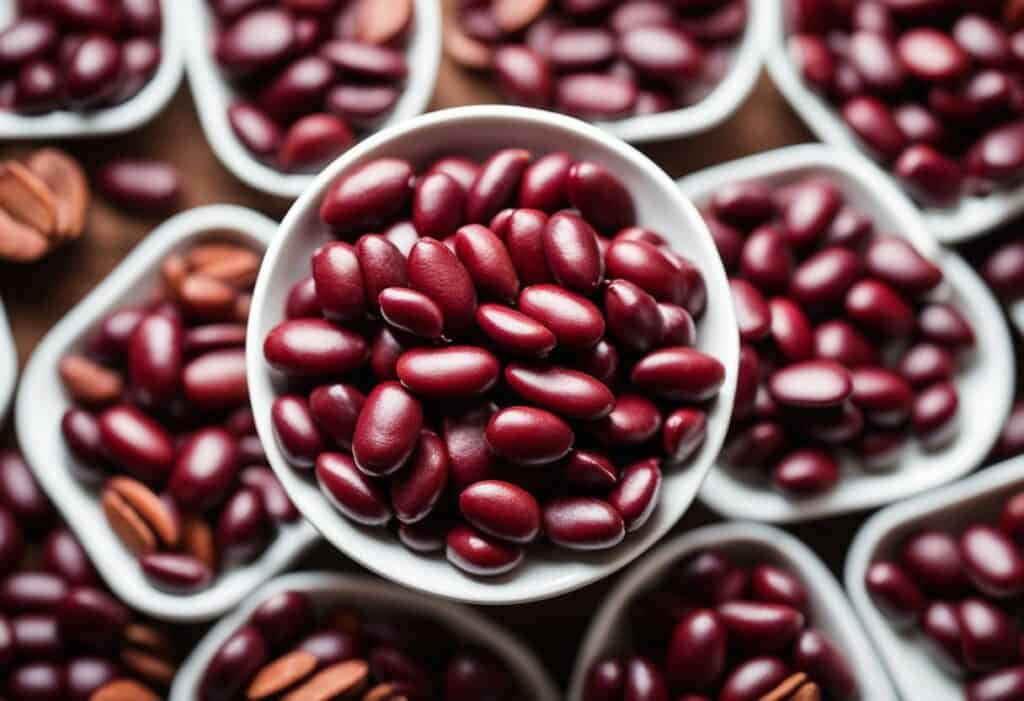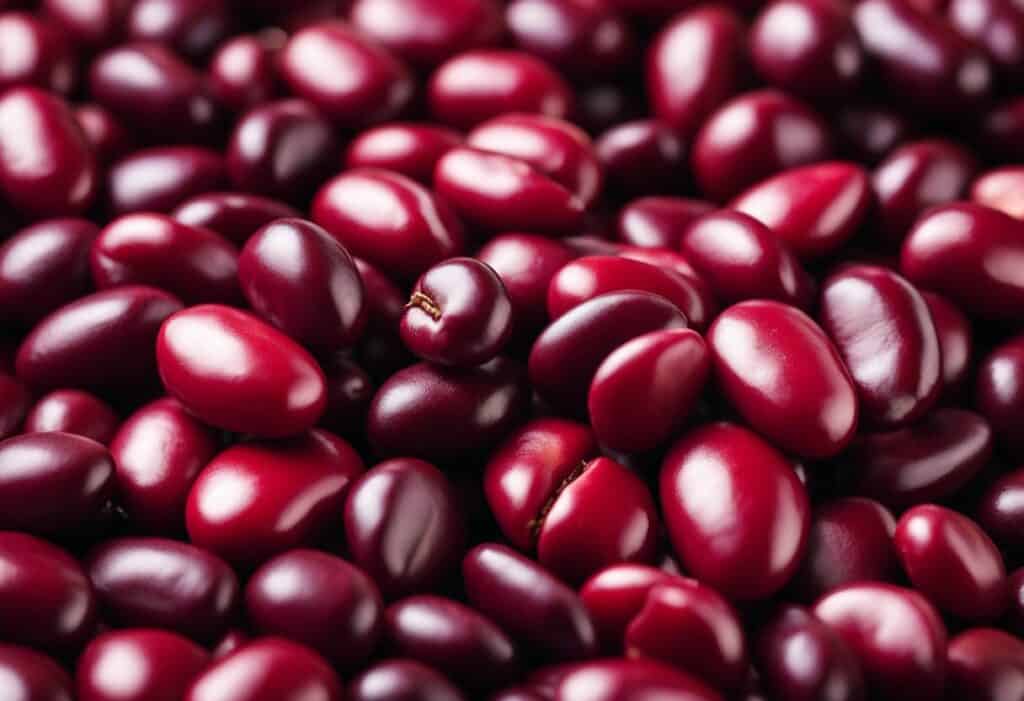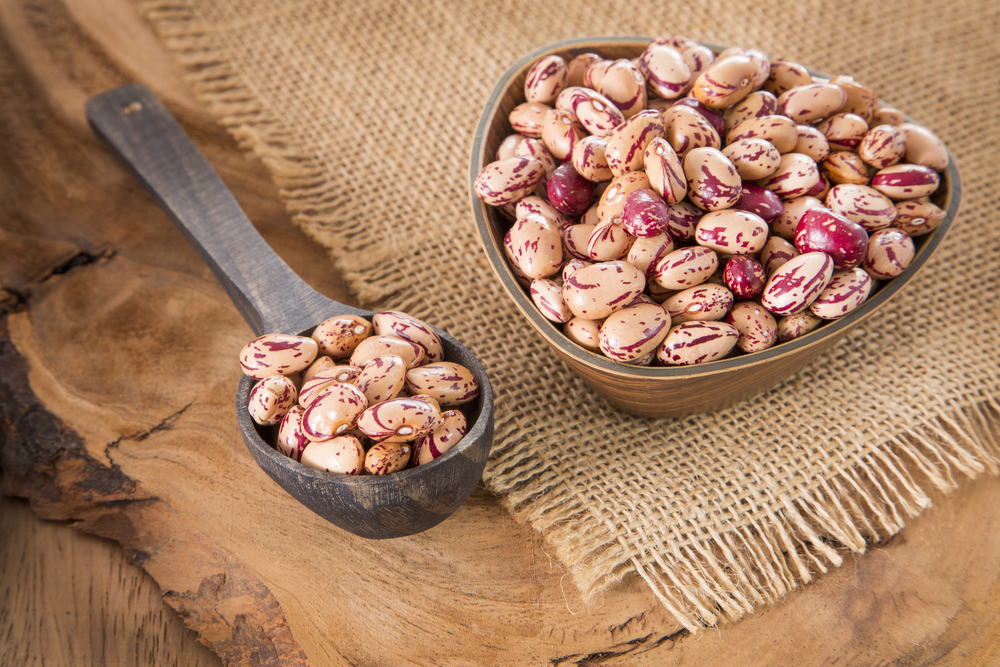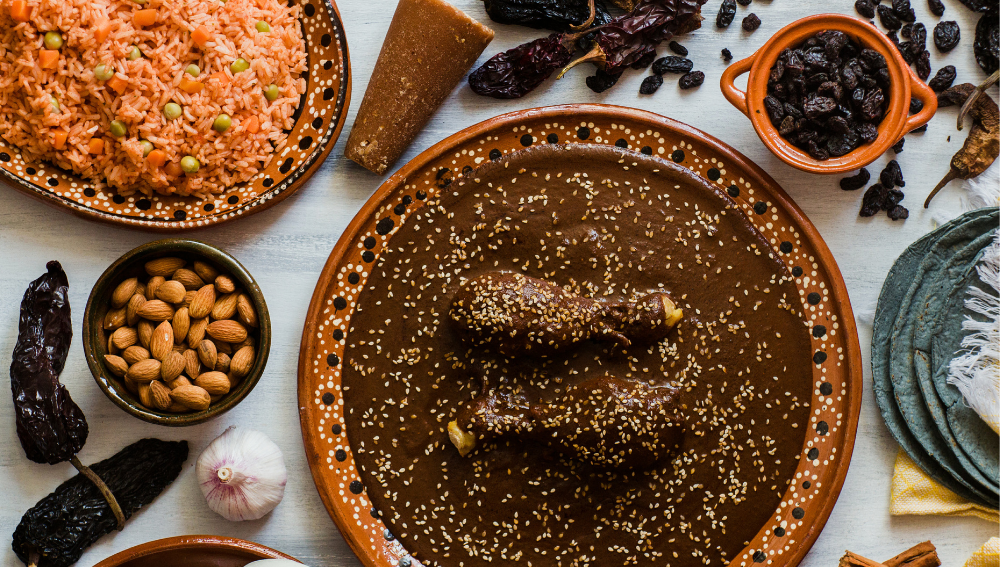Red beans and kidney beans are two popular legumes that are often used in a variety of dishes. While they may look similar, there are some key differences between the two.
Understanding these differences can help you make informed decisions when it comes to cooking and eating these beans.

Red beans, also known as Mexican red beans, are small, plump, and oval-shaped, similar to pinto beans. They are red in color and have a slightly sweet and nutty flavor.
On the other hand, kidney beans are larger in size and have a distinctive kidney shape. They come in a variety of colors, including red, white, and speckled.
Kidney beans have a slightly earthy and meaty flavor, making them a popular ingredient in chili and other hearty dishes.
When it comes to nutritional profile, both red beans and kidney beans are packed with protein, fiber, and essential vitamins and minerals.
However, there are some differences in their nutrient contents. For example, red beans are slightly higher in calories and carbohydrates, while kidney beans are higher in iron and potassium.
Understanding these differences can help you choose the right bean for your dietary needs.
Key Takeaways
- Red beans and kidney beans have physical differences, such as size and shape, and differences in nutritional profile.
- Both beans are a good source of protein, fiber, and essential vitamins and minerals.
- Understanding the differences between the two beans can help you choose the right one for your dietary needs.
Understanding Red and Kidney Beans
As someone who enjoys cooking with beans, I have found that red beans and kidney beans are often used interchangeably in recipes. However, they are not the same and have some differences that are worth noting.
Red beans are small, plump, and oval-shaped, with a red color. They are similar in appearance to pinto beans.
On the other hand, kidney beans are larger and have a distinctive kidney shape. They come in two main varieties: dark red and red-speckled.
The latter has a paint-splashed skin comprising white and red colors and is often referred to as sugar beans.
When it comes to taste, both beans are mild and slightly sweet. However, some people find that kidney beans have a slightly stronger flavor than red beans.
One of the main differences between the two beans is their texture. Kidney beans have a firmer texture and hold their shape better than red beans, which are softer and creamier.
This makes kidney beans ideal for dishes that require structure, such as salads and stews, while red beans are better suited for dishes that require a softer texture, such as dips and spreads.
In terms of nutrition, both beans are excellent sources of protein, fiber, and various vitamins and minerals.
However, kidney beans have slightly more protein and fiber than red beans. They are also higher in iron and potassium.
In summary, while red beans and kidney beans may look similar, they have distinct differences in texture, flavor, and nutritional value.
Understanding these differences can help you choose the right bean for your dish and make the most of their unique characteristics.
Physical Characteristics

Color
Red beans and kidney beans are both named after their color. Red beans are small, plump, and oval-shaped, similar to pinto beans, and are red in color.
On the other hand, dark red kidney beans are larger in size and have a deep red color, which resembles red beans.
However, some kidney beans have a speckled skin with a paint-splashed appearance, comprising white and red colors, and are often referred to as sugar beans.
Size and Shape
One of the primary differences between red beans and kidney beans is their size and shape. Red beans are smaller and rounder than kidney beans, which are larger and have a distinctive kidney shape.
Red beans are usually about 1/2 inch long, while kidney beans are about 3/4 inch long.
Texture
Both red beans and kidney beans have a firm texture, but kidney beans are slightly firmer.
When cooked, red beans have a mildly sweet and slightly nutty flavor with a gentle aroma, while kidney beans present a more robust, mildly sweet, and somewhat bitter taste with a richer, earthy, and slightly smoky aroma.
In summary, red beans and kidney beans differ in their physical characteristics, including color, size, shape, and texture.
While red beans are smaller, rounder, and have a red color, kidney beans are larger, have a distinctive kidney shape, and are deep red in color.
Additionally, kidney beans have a slightly firmer texture and a more robust, earthy flavor compared to red beans.
Nutritional Profile
Red beans and kidney beans are both rich in nutrients, making them a great addition to any diet.
They are both excellent sources of plant-based protein and dietary fiber, as well as vitamins and minerals like iron, vitamin B6, folate, magnesium, potassium, copper, phosphorus, thiamine, zinc, and calcium.
Protein and Fiber Content
Both red beans and kidney beans are high in protein and fiber, making them an excellent choice for vegetarians and vegans.
A quarter-cup serving of canned red kidney beans provides 3.5 grams of protein and 3.5 grams of fiber, while the same serving of canned red beans provides 2.5 grams of protein and 2.5 grams of fiber.
Vitamins and Minerals
Red beans and kidney beans are also rich in vitamins and minerals. They are both excellent sources of iron, which is essential for the production of red blood cells.
A quarter-cup serving of canned red kidney beans provides 0.9 milligrams of iron, while the same serving of canned red beans provides 0.6 milligrams of iron.
Both types of beans are also rich in vitamin B6 and folate, which are important for brain function and the production of DNA and red blood cells.
A quarter-cup serving of canned red kidney beans provides 0.1 milligrams of vitamin B6 and 115.1 micrograms of folate, while the same serving of canned red beans provides 0.1 milligrams of vitamin B6 and 40 micrograms of folate.
In addition, red beans and kidney beans are rich in magnesium, potassium, copper, phosphorus, thiamine, and zinc.
Magnesium is important for bone health and the proper functioning of muscles and nerves, while potassium helps to regulate blood pressure and maintain fluid balance in the body.
Copper is important for the production of red blood cells and the proper functioning of the immune system, while phosphorus is important for bone health and the production of DNA and RNA.
Thiamine is important for the metabolism of carbohydrates and the proper functioning of the nervous system, while zinc is important for the immune system and the proper functioning of enzymes in the body.
In summary, both red beans and kidney beans are excellent sources of plant-based protein, dietary fiber, vitamins, and minerals.
They are both nutritious and versatile, making them a great addition to any diet.
Health Benefits
As a legume, both red beans and kidney beans are packed with essential nutrients. They are an excellent source of protein, fiber, and complex carbohydrates, making them a great addition to a balanced diet.
One of the most significant health benefits of both red beans and kidney beans is their ability to help regulate blood sugar levels.
They have a low glycemic index, which means they don’t cause spikes in blood sugar levels. This makes them an ideal food for people with diabetes or those looking to manage their weight.
Both red beans and kidney beans are rich in antioxidants that help protect the body against free radicals, which can cause cell damage and contribute to chronic diseases such as heart disease and cancer.
These legumes are also beneficial for heart health. They contain soluble fiber, which can help lower cholesterol levels and reduce the risk of heart disease.
Red beans and kidney beans are also good for gut health. They contain prebiotic fiber, which feeds the beneficial bacteria in the gut, promoting a healthy digestive system.
For those with anemia, both red beans and kidney beans are an excellent source of iron, which is essential for red blood cell production.
In terms of weight management, both red beans and kidney beans are low in fat and high in fiber, which can help you feel full for longer periods, reducing the likelihood of overeating.
Finally, both red beans and kidney beans can improve insulin sensitivity, which is essential for people with diabetes. They contain compounds that can help regulate blood sugar levels and improve insulin sensitivity.
Overall, incorporating red beans and kidney beans into your diet can provide a range of health benefits, making them a great addition to any meal.
Culinary Uses
Common Recipes
Red beans and kidney beans are both versatile and can be used in a variety of dishes. One of the most popular recipes that feature red beans is the classic Louisiana dish, red beans and rice.
This dish is typically made with red beans, sausage, and rice, and is a staple in Cajun and Creole cuisine. Kidney beans are often used in chili and chili con carne, as well as in tacos and burritos.
Both red beans and kidney beans can also be used to make hummus. Simply blend cooked beans with tahini, garlic, lemon juice, and olive oil for a delicious and healthy dip.
Cooking Methods
Both red beans and kidney beans can be cooked in a variety of ways. They can be cooked on the stovetop, in a pressure cooker, or in a slow cooker.
When using canned beans, they can be heated on the stovetop or in the microwave.
To cook red beans or kidney beans on the stovetop, soak them overnight in water, then drain and rinse. Add the beans to a pot with fresh water and bring to a boil.
Reduce the heat and simmer until the beans are tender, about 1-2 hours. If using a pressure cooker, cook the beans for 20-25 minutes on high pressure.
Substitutes
If you don’t have red beans or kidney beans on hand, there are several substitutes you can use.
Pinto beans, black beans, adzuki beans, cannellini beans, navy beans, pink beans, white beans, and cranberry beans can all be used in place of red beans or kidney beans in most recipes.
Chickpeas and lentils can also be used as substitutes, although they have a slightly different flavor and texture. Chickpeas are commonly used in hummus, while lentils are often used in soups and stews.
Potential Health Concerns

As with any food, there are potential health concerns associated with consuming red beans and kidney beans. Here are a few things to keep in mind:
Gas
Both red beans and kidney beans contain oligosaccharides, a type of carbohydrate that can cause gas and bloating in some people.
To minimize these effects, it’s recommended to soak the beans overnight and rinse them thoroughly before cooking.
Additionally, gradually increasing your intake of beans can help your body adjust to the increased fiber content.
Toxicity
Raw or undercooked kidney beans contain a toxin called phytohemagglutinin, which can cause symptoms such as nausea, vomiting, and diarrhea.
It’s important to fully cook kidney beans to destroy this toxin and reduce the risk of illness.
According to Food Network, “Raw kidney beans have between 20,000 to 70,000 hau, while fully-cooked beans contain 200 to 400 hau. White kidney beans have one-third the amount of the toxin compared to red kidney beans.”
Bloating
In addition to gas, consuming large amounts of beans can also cause bloating. This is because beans contain complex carbohydrates that are difficult for the body to digest.
To minimize bloating, it’s recommended to start with small portions and gradually increase your intake over time.
Overall, red beans and kidney beans are nutritious and delicious additions to a healthy diet. However, it’s important to be aware of these potential health concerns and take steps to minimize their effects.
By soaking and thoroughly rinsing the beans, fully cooking them, and gradually increasing your intake, you can enjoy the many health benefits of these legumes without experiencing unpleasant side effects.
Red Beans Vs Kidney Beans
As a food lover, I have often come across recipes that call for either red beans or kidney beans. While these two beans may look similar, they have some distinct differences that set them apart.
In this section, I will explore the differences between red beans and kidney beans and provide some information on their nutritional value.
Differences between Red Beans and Kidney Beans
Red beans and kidney beans may look similar in color, but they have different shapes and sizes. Red beans are small, plump, and oval-shaped, similar to pinto beans, while kidney beans are larger and have a distinctive kidney shape.
Additionally, red-speckled kidney beans have a paint-splashed skin comprising white and red colors, and they are often referred to as sugar beans.
When it comes to cooking, kidney beans are naturally harder than red beans, so they take longer to cook. If not cooked properly, kidney beans can cause illness and have a poor texture.
On the other hand, red beans are softer and cook more quickly than kidney beans.
Nutritional Value
Both red beans and kidney beans are excellent sources of protein, fiber, and essential vitamins and minerals. However, they differ slightly in their nutritional values.
According to Healthagy, red beans have a higher glycemic index than kidney beans, meaning they can cause a more significant spike in blood sugar levels.
However, they are also higher in iron, magnesium, and phosphorus than kidney beans.
Kidney beans, on the other hand, are higher in potassium and folate than red beans. They also have a lower glycemic index, making them a better option for people with diabetes.
In terms of recommended daily intake (RDI), both beans are excellent sources of protein, fiber, and other essential nutrients.
One cup of cooked red beans contains 15 grams of protein, 13 grams of fiber, and 20% of the RDI for iron.
One cup of cooked kidney beans contains 15 grams of protein, 11 grams of fiber, and 20% of the RDI for potassium.
Conclusion
In conclusion, while red beans and kidney beans may look similar, they have some distinct differences. Red beans are smaller, cook more quickly, and are higher in iron and magnesium, but they have a higher glycemic index.
Kidney beans are larger, take longer to cook, and are higher in potassium and folate, but they have a lower glycemic index.
Both beans are excellent sources of protein, fiber, and essential vitamins and minerals, making them a healthy addition to any diet.
Related posts:
Frequently Asked Questions

What is the difference between red beans and kidney beans in terms of nutritional value?
Red beans and kidney beans are both highly nutritious and have similar nutrient profiles. However, there are some differences in their nutritional content.
According to HealthAgy, red beans offer more iron, calcium, vitamin B6, phosphorus, and magnesium than kidney beans.
They also provide a good source of protein at 13g per cup (cooked), while having significantly less fat than kidney beans at only 0.2g per cup (cooked). Kidney beans, on the other hand, have more fiber and folate than red beans.
Can red beans be substituted for kidney beans in recipes?
Yes, red beans can be substituted for kidney beans in most recipes. They have a similar taste and texture, so they can be used interchangeably in dishes like chili, soups, and stews.
However, it’s worth noting that red beans are smaller and more rounded than kidney beans, so they may not hold up as well in recipes that require larger beans, like salads.
What are some good substitutes for kidney beans?
If you’re looking for a substitute for kidney beans, there are a few options you can try. EatingWell suggests using pinto beans, black beans, or navy beans as substitutes for kidney beans.
These beans have a similar texture and flavor to kidney beans, and can be used in recipes like chili, burritos, and salads.
What kind of beans are typically used in red beans and rice?
Red beans and rice is a classic Louisiana dish that typically uses red kidney beans.
According to Oh Snap Cupcakes, red kidney beans are the traditional choice for this dish because they hold their shape well during cooking and have a creamy texture that pairs well with rice.
Are red kidney beans healthier than other types of beans?
Red kidney beans are highly nutritious, but they are not necessarily healthier than other types of beans.
All beans are a great source of protein, fiber, and essential nutrients like iron, folate, and potassium. The best bean for you depends on your nutritional needs and personal preferences.
Which is healthier: black beans or red kidney beans?
Both black beans and red kidney beans are highly nutritious and offer a range of health benefits. According to LittleKitchenBigWorld, black beans have a slightly higher protein content and are a good source of antioxidants.
Red kidney beans, on the other hand, have more fiber and folate than black beans. Ultimately, the best bean for you depends on your nutritional needs and personal preferences.







